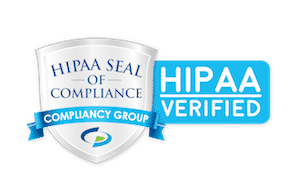National Health IT Week celebrates the power of Health Information Technology to improve the health and healthcare of patients across the nation. The advantages and disadvantages of technology such as Electronic Health Record (EHR) systems have been discussed since 2009 with the passage of the Health Information Technology for Economic and Clinical Health (HITECH) Act. Similarly, Clinical Decision Support Systems (CDSS) encompass a variety of tools that use patient-specific information to enhance decision-making in the clinical workflow. While having access to CDSS should improve health outcomes, however, it can also create the opposite effect. If the design does not take into account the engineering principles of usability, this may result in a poorly functioning program that could lead to impediment of workflow and technology-induced errors.
This is apparent with mobile health applications, a form of CDSS. A new UC San Francisco study revealed “nearly every participant who used health apps could not get to a productive point. The respondents also were able to complete just 51 percent of data entry tasks and just 43 percent of them could access data from the tools.”1 Another prime example is the use of EHR systems that commonly include automated pop-up alerts. Ideally, these pop-up alerts warn the provider of possible dangers/interactions and help improve patient safety. However, the reality is that too many alerts is synonymous to the “boy who cried wolf” and inevitably lead to alert fatigue. Though it is difficult to gauge the impact of these alerts on patient care, it is safe to say that they can cause more harm than good (i.e. over 74% of life threatening reactions with definite allergen and prescribe medication matches were overridden2).
But on the bright side, the importance of usability for CDSS is on the radar of healthcare systems. Ultimately, this stems from the result of clinicians devising workarounds to fit the system rather than the system fitting and assisting the end-users (Table 1).
| Event | Location | Date | Details |
|---|---|---|---|
| PMWC 2024 | Silicon Valley, CA | January 24-26, 2024 | CEO Kristine Ashcraft is speaking on Friday, January 26th at 11:00am PST on the "Current and Desired States of Standardization of Reporting" panel. |
| ViVE | Los Angeles, CA | February 25-28, 2024 | CEO Kristine Ashcraft is attending ViVE 2024 as part of the 2bPrecise & YouScript team in booth #2018 |
| PGx 101: Understanding Coverage for Better Treatment | Online Webinar | May 15, 2024 | Join us for a free webinar where President and Founder Kristine Ashcraft explores the easy process of incorporating pharmacogenomics into your facility to deliver personalized care for your patients. |
| PGx Best Practices: Getting Started | Online Webinar | June 27, 2024 | Join us for a webinar with President and Founder Kristine Ashcraft, as she discusses best practices for implementing pharmacogenomics. |
Table 1: Common usability problems related to CDSS, workarounds that clinicians devise to complete a task and recommendations for correction.3
Though EHR and CDSS usability is nowhere near the user experience of consumer products, the strive for improvements are nonetheless welcomed. Given time, and enough feedbacks from stakeholders such as physicians, pharmacists and patients, CDSS can prove to be useful rather than intrusive. The potential for computers to add value by providing decision-support at the point of care is undebatable. It is this area of Health Informatics that has the prospect to revolutionize medicine and the delivery of healthcare.
- http://www.fiercehealthcare.com/mobile/mhealth-apps-failing-miserably-despite-high-user-interest-reveals-study
- http://www.clinical-innovation.com/topics/ehr-emr/study-doctors-increasingly-override-drug-allergy-alerts-ehrs
- https://www.healthit.gov/sites/default/files/cds/3_5_5_decision_support_evaluation_tools.pdf

